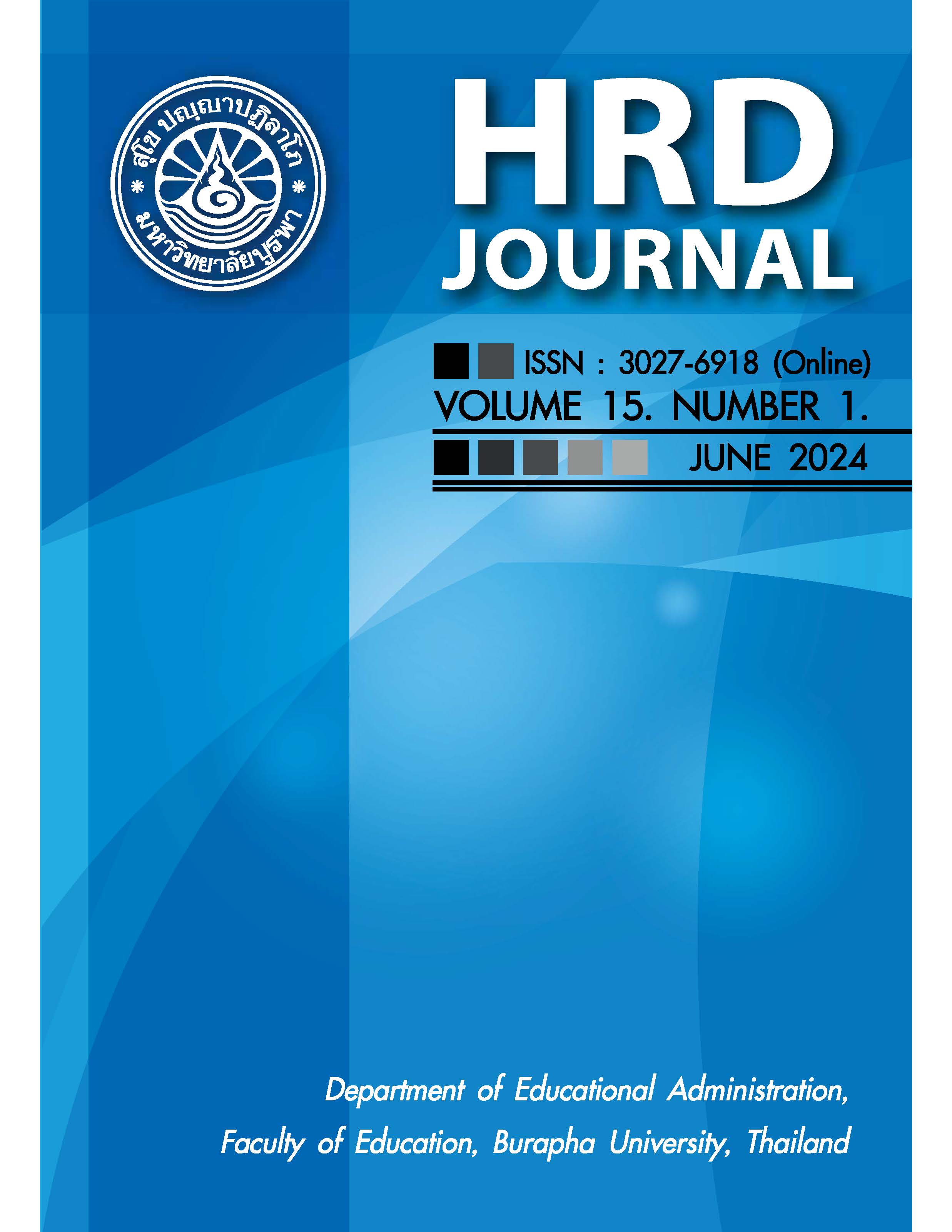Enhancing Employee Engagement of XYZ Higher Educational Institute
Abstract
The objectives of this research are 1) study in factors affecting employee engagement 2) study the level of employee engagement and 3) propose the methods for enhancing employee engagement of XYZ Higher Educational Institute by using mixed methods research separating by 3 phases. In phase 1, a qualitative method has been used to find factors, affecting employee engagement by using in-depth interview of 2 management levels and group discussion of 47 employee were there are 4 factors affecting employee engagement which are Job Characteristics, People and Social, Organization Practice, and Organizational Climate and Culture. When employee are engaged, they will show in feeling and behavior. Moreover, the engaged employee will perform 3 different levels: individual performance, team performance, and business performance. In phase 2, a quantitative method has been used to find the level of employee engagement. The sample is 300 employees of XYZ Higher Educational Institute selected by simple random sampling. The stepwise multiple regression analysis is used, and found out that Organizational Climate and Culture factor and Job Characteristics factor affected employee engagement showing in feeling and behavior at statistical significance level of 0.05. When employee engage, the result of working show in team performance the most, then individual performance and business performance. In phase 3, there is a proposal for creating employee engagement. After receiving engagement result, a group discussion with human resources management team was arranged to find out the methods for enhancing employee engagement; and found that there are five methods: 1) analyze the problems in each department to solve it correctly 2) review the action plan of human resources department used in present 3) create an employee’s awareness of useful information within organization 4) implement more effective tools, such as performance evaluation and Information Technology 5) Declare the results of tools and systems’ usage to employee for clarification and fairness.
References
กีรติกร บุญส่ง. (2561). ความผูกพันของพนักงานต่อองค์กรในกลุ่มธุรกิจเฟอร์นิเจอร์. วารสารปัญญาภิวัฒน์, 10(ฉบับพิเศษ), 180-193.
ธิติ โกวิทยา. (2562). การศึกษาปัจจัยที่มีผลต่อระดับความผูกพันและผลงานของพนักงาน : กรณีศึกษา บริษัท XYZ จำกัด. (วิทยานิพนธ์ปริญญามหาบัณฑิต). สถาบันการจัดการปัญญาภิวัฒน์.
พัชรินทร์ คีรีเมฆ. (2560). ความผูกพันต่อองค์กรของครูและบุคลากรในโรงเรียนเอกชน สังกัดสำนักงานเขตพื้นที่การศึกษาประถมศึกษา. (การค้นคว้าอิสระปริญญามหาบัณฑิต). มหาวิทยาลันราชภัฏนครสวรรค์.
สถาบันการจัดการปัญญาภิวัฒน์ (2565). สำรวจความผูกพันองค์กรสถาบันการจัดการปัญญาภิวัฒน์ ประจำปีการศึกษา 2564. (รายงานประจำปี). สถาบันการจัดการปัญญาภิวัฒน์.
Deloitte. (2015). Becoming irresistible: A new model for employee engagement. Retrieved
Fahruddin F., Jusni J., and Aswan, A. (2023). Mediating role of Work Engagement on the influence Job Resources and Public Service Motivation on affective commitment in employees in Parakita Dental and General Clinic. International Journal of Multidisciplinary Approach Research and Science, 1(2), 253-262. Retrieved from https://doi.org/10. 59653/ijmars.v1i02.107
Gallup. (2013). State of the Global Workplace. Retrieved from https://nicolascordier.files. wordpress.com/2014/04/gallup-worldwide-report-on-engagement-2013.pdf
Gartner (2020) Advance Your Organization’s Employee Experience Maturity. Retrieved from
https://www.gartner.com/en/documents/3982365
Gupta, S. K., Bhasin, J. and Mushtaq, S. (2021). Employer brand experience and organizational citizenship behavior: mediating role of employee engagement. Asia-Pacific Journal of Business Administration, 13(3), 357-382. doi:10.1108/APJBA-08-2020-0287
Herzberg, F. (1959). Herzberg’s Motivation-Hygiene Theory: Two-factor. Retrieved from
https://educationlibrary.org/herzbergs-motivation-hygiene-theory-two-factor/
Hermawan R. (2020). Optimizing Employee Engagement to Improve Human Resources Performance: A Case Study of A Private University in Facing the VUCA Era. Technium Social Sciences Journal, (12), 196-205. issn:2668-7798
Institute for Employment Studies. (2004). The Drivers of Employee Engagement. Retrieved from https:// www.employmentstudies.co.uk /system/files/resources/files/408.pdf
Joo, B. K. And Lee, I. (2017). Workplace happiness: work engagement, career satisfaction, and subjective well-being. Evidence-based HRM: a Global Forum for Empirical Scholarship, 5(2), 206-221. doi:10.1108/EBHRM-04-2015-0011
Kahn, W. A. (1990). Psychological Conditions of Personal Engagement and Disengagement at Work. Academy of Management Journal 1990, 33(4), 692-724.
Kincentric. (2019). Managing Engagement in Times of Change. Retrieved from https://www. kincentric.com/-/media/kincentric/2019/november/managing-engagement-in-times-of-change.pdf
Kincentric. (2019). Wired for Engagement. Retrieved from https://www.kincentric.com/-/media/kincentric/2019/november/culture/wired-for-engagement.pdf
Maslow, A.H. (1943). Maslow’s Hierarchy of Needs Theory. Retrieved from https://www. managementstudyguide.com/maslows-hierarchy-needs-theory.htm
Saks, A. M., Gruman, J. A. and Zhang, Q. (2021). Organization engagement: a review and comparison to job engagement. Journal of Organizational Effectiveness: People and Performance, 9(1), 20-49. doi:10.1108/JOEPP-12-2020-0253
Yamane T. (1967). Statistics: An Introductory Analysis. (2nd ed). New York: Harper and Row.
Zinger, D. (2012). The Power of Employee Engagement. Retrieved from https://www.david zinger.com/wp-content/uploads/Zinger-Pyramid-of-Employee-Engagement-Booklet-August-2012.pdf
Downloads
Published
How to Cite
Issue
Section
License
Copyright (c) 2024 Department of Educational Administation, Faculty of Education, Burapha University

This work is licensed under a Creative Commons Attribution-NonCommercial-NoDerivatives 4.0 International License.
Copyright@HRD Journal, Burapha University






